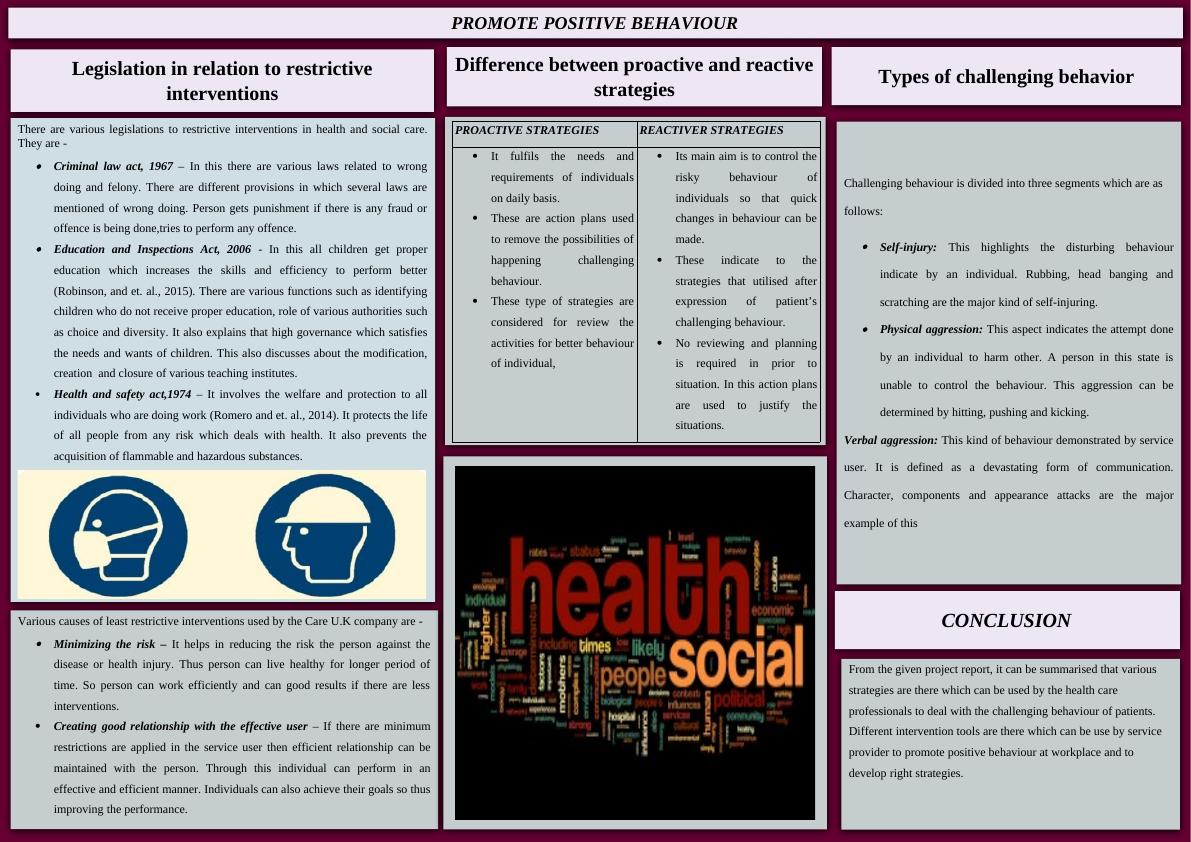Legislation in relation to restrictive interventions
1 Pages630 Words51 Views
Added on 2023-03-21
About This Document
This article discusses the different legislations related to restrictive interventions in health and social care, including the Criminal Law Act, Education and Inspections Act, and Health and Safety Act. It explains the provisions and laws related to wrongdoings, the role of authorities in ensuring proper education, and the welfare and protection of individuals in the workplace. It also highlights the importance of proactive and reactive strategies in managing challenging behavior.
Legislation in relation to restrictive interventions
Added on 2023-03-21
ShareRelated Documents
End of preview
Want to access all the pages? Upload your documents or become a member.
Promoting positive behaviour in health and social care
|8
|2218
|319
Promote Positive Behaviour in Health and Social Care
|1
|637
|21
Promote Positive Behaviour
|10
|561
|58
Project on Laws in Working Environment
|8
|1960
|81
Legislation in relation to restrictive intervention in health, social care
|7
|667
|35
Promote Positive Behaviour Analysis
|6
|1417
|28

